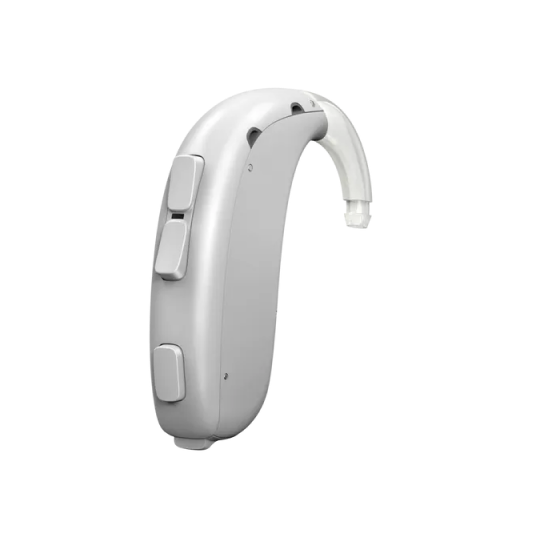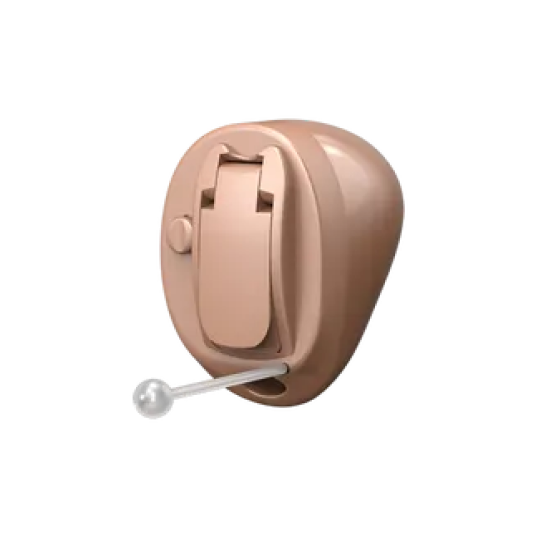Hearing Aids
Your Path to Better HearingHearing aids are small, powerful devices designed to improve hearing for those with hearing loss. By amplifying sounds, hearing aids help you stay connected to the world around you, whether it's conversations with loved ones, listening to music, or enjoying the sounds of nature. At Audiology Doctors of Tulsa, we offer a variety of hearing aids and provide personalized care to help you find the perfect fit for your lifestyle and hearing needs.
"Hearing aids reduced the rate of cognitive decline in older adults at high risk of dementia by almost 50% over a three-year period."
– NIH Research Matters, August 8, 2023Discover the Perfect Hearing Aid for You
Custom Solutions for Every Lifestyle and Level of Hearing Loss
Behind-the-Ear (BTE)

In-the-Ear (ITE)

In-the-Canal (ITC)

Completely-in-the-Canal (CIC)

Invisible-in-the-Canal (IIC)
IIC hearing aids are the smallest and most discreet type, fitting deep inside the ear canal, making them nearly invisible. These are suitable for individuals with mild to moderate hearing loss and are custom-fitted for comfort and clarity.

Receiver-in-Canal (RIC)
Hearing Aid Test Drive
We understand that choosing the right hearing aid is a big decision. That’s why we offer a two-week Hearing Aid Test Drive program, allowing you to try out your new hearing aids in real-life situations. This trial period gives you the chance to see how they perform in your everyday activities, so you can feel confident about your purchase.
Follow-Up and Adjustments
Ensuring Your Hearing Aids Are the Perfect FitAfter Your Trial Period, We'll:
Make adjustments for better comfort or performance, if needed
Provide personalized support to ensure your satisfaction

Explore the Latest in Hearing Aid Technology
Advanced Features That Make Hearing EasierModern hearing aids come with amazing features that can make a big difference in how you hear the world around you. Here are some of the top advancements:
Bluetooth Connectivity
Noise Reduction
Rechargeable Batteries
Brain Hearing

Brain Activity

Hearing Loss

Hearing Aids

Stay Connected with Smartphone-Compatible Hearing Aids
Hands-Free Calls, Music Streaming, and More at Your FingertipsWith smartphone-compatible hearing aids, you can:
Make hands-free phone calls
Stream music directly to your hearing aids
Use your smartphone as a remote microphone for enhanced TV sound
Enjoy seamless connection with Apple and Android devices





Your Trusted Audiology Experts
in Tulsa, OklahomaAnother exciting feature is Brain Hearing, which helps keep your brain active and healthy by consistently stimulating your hearing. Your brain plays a critical role in how you understand and process sounds, and this feature helps support that process by ensuring your brain is continually engaged.

